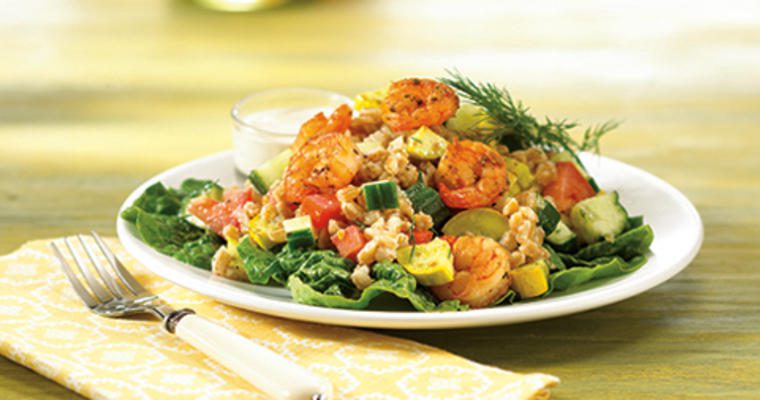With a national shift in the way consumers think about food, restaurant operators are returning to scratch cooking as a way to enhance flavor, use more wholesome foods, add appeal with colorful fruits and vegetables, and reconnect with the source of their food.
Healthcare food service operators are embracing “from scratch” food trends as well—for all the reasons mentioned above, but also as a way to improve nutrition and reduce food costs while increasing the quality of food served to patients and residents.
Trends for Healthcare Food Service Meals
Center-of-the-Plate Opportunities
Value cuts—less-traditional cuts of meat—are less-expensive options that deliver big flavor and tender, mouthwatering results. These meats benefit from marinating, stewing, braising, and roasting as slow cooking can break down these tougher cuts to yield flavorful dishes.
Boneless chicken thighs are another low-cost superstar, whether they’re browned and slow cooked, sautéed, grilled, or roasted in the oven. Paired with a rustic salsa of fresh fruits or vegetables, roasted chicken thighs become a quick and satisfying dish that exemplifies the evolution of wholesome cooking.
Ground meats also have a lot of potential. Meatballs, meatloaves, skewers, and kebabs can draw from global influences, such as Asian-inspired lettuce wraps with ground chicken. Simple scratch-made turkey or beef meatballs are core components that can be cross-utilized to save labor; toss them into marinara, or skewer them and serve with a flavorful yogurt-dipping sauce.
Fresh Approaches to Fruits and Vegetables
Increase the seasonality of your menu while holding the line on labor costs by sticking to uncomplicated preparations of fresh produce.
Simple combinations of brightly colored fruits and vegetables offer contemporary flavor and appeal, with modest demands on labor. Pair roasted beets with oranges. Toss juicy watermelon chunks with crumbled feta cheese. Blend dried fruits and fresh herbs into rustic grain salads. These two-step preparations pack a big punch for relatively little effort.
Speed-scratch cooking—combining shelf-stable or value-added products with fresh produce—also opens up lots of opportunities. Combine prepared marinara sauce with fresh chopped mushrooms, zucchini, and basil for a quick and simple pasta dish. The addition of fresh produce not only enhances flavor, but can also lower the sodium content often found in value-added products. This can help your menu offerings follow the lower sodium regulations.
Choosing multi-use ingredients can also be a very effective tool for reducing labor needs and costs. For example, unlike instant potatoes, peeled and steamed potatoes can be used in a much wider range of applications. Moreover, this approach offers huge food-cost savings and a superior final product.
New Ideas for Grains, Beans, and Legumes
Inherently low in cost, whole grains, dried beans, and legumes are a versatile staple. Specialty varieties of rice such as jasmine, basmati, and wild-rice blends offer a fresh departure from standard instant rice. In addition, these naturally flavorful kinds of rice produce a more satisfying finished dish without the need to add fat, sugar, or salt.
Quinoa, barley, and farro must be cooked from scratch—though there are prewashed, quick varieties on the market—but they offer countless opportunities for healthy, creative, and delicious dishes. Grits offer tremendous potential, particularly when you add in sharp cheese and fresh herbs.
Beans and legumes, like split peas and lentils, are also worth preparing from scratch. With an overnight soak, they cook fairly quickly—lentils, for example, in as little as 10 minutes. The difference in quality is evident, and the yield is very high, with a huge cost savings and much lower sodium content.
New Ways to Meet Many Needs
Taking a fresh approach with low-cost, wholesome, and flavorful ingredients goes a long way toward meeting the unique challenges faced by food service operators in the healthcare and assisted-living markets. But, perhaps even better, using flavorful seasonal ingredients that don’t need much help to shine on their own goes a long way toward satisfying the objective shared by operators: to serve up food that’s distinctive, delicious, and satisfying.












